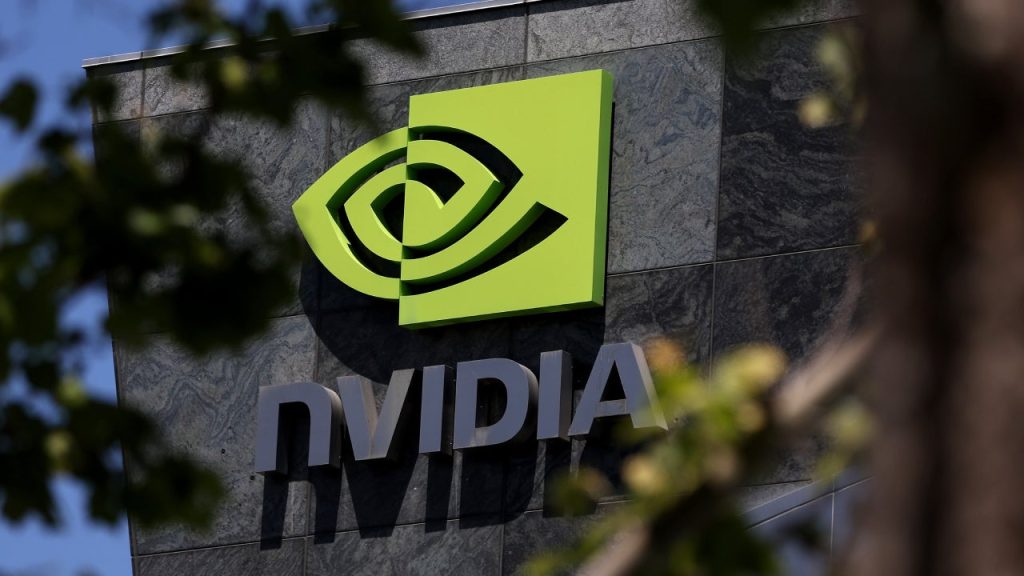Justin Sullivan/Getty Images
Semiconductor chipmaker Nvidia has had a run for the ages. The company’s stock soared and then soared again, becoming a popular investment for hedge funds and regular investors alike. The company quickly became among the world’s most valuable, making plenty of investors rich.
Here’s how much the stock has returned to shareholders – but don’t expect the ride to continue.
Nvidia’s stock skyrockets
Nvidia has been growing at a phenomenal rate as demand for the company’s products rises rapidly. Nvidia makes chips that power cryptocurrency and more recently it’s benefited from the emergence of artificial intelligence (AI), which requires the company’s powerful chips.
It’s all led to a stock that has skyrocketed over the last five years (data as of May 28, 2024).
The stock now sports a market capitalization of about $2.7 trillion, putting it among the world’s largest companies.
That meteoric climb has been fueled by strong results. In its most recent fiscal year, Nvidia hit nearly $61 billion in revenue, up from about $27 billion in the prior year. In its most recent quarter the company reported revenue of $26 billion – up 262 percent from the year-ago quarter. This kind of eye-popping growth is rarely seen from a company of Nvidia’s enormous size.
The company’s customers include some of the world’s best tech companies, including Alphabet, Microsoft and Meta Platforms. Those companies are flush with cash and investing for growth.
Of course, the stock’s valuation plays a key role in the returns investors can expect from here. And by some measures – notably the stock’s own historical valuations – the current stock price does not look so expensive. Some stock analysts think Nvidia has plenty of room to run, too.
To continue this dominating run, Nvidia will need to keep growing and exceeding expectations.
How much could you have earned on Nvidia stock?
The stellar return on Nvidia stock is obvious in the chart above, but how does that translate into returns for investors? The annual returns that investors have enjoyed are gobsmacking.
| 1 year | 3 years | 5 years | 10 years | Since IPO | |
|---|---|---|---|---|---|
| Total return | 173% | 589% | 2,854% | 23,669% | 282,884% |
| Average annual return | 173.5% | 90.3% | 96.8% | 72.8% | 36.8% |
Nvidia completed its IPO in January 1999, right in the midst of the dotcom mania. Since then, it’s delivered 282,884 percent total returns to investors. That translates into 36.8 percent annually over the last quarter century.
The annualized returns have soared above the long-term average more recently. In fact, the average annual return has been much better over the last 5- and 10-year periods than it has since the IPO. Over the last half-decade, the stock has doubled nearly every year on average.
This recent run, as compared to the long-term return, suggests that these current returns are ultimately unsustainable, even if the stock continues to do well in future. The returns of the recent past are just too mindbendingly good to continue at their current breakneck pace.
Of course, investors may still enjoy strong returns from here, but they’re unlikely to be as good as in the last few years.
The power of long-term investing
Nvidia’s long-term returns over almost any time frame look outstanding, but it’s important for investors to remember that they’ll only achieve these returns if they buy and hold the stock. Trading in and out is likely to generate subpar returns for the vast majority of investors, and research shows time and again that active investing underperforms passive investing.
Taking a buy-and-hold approach also means that you’ll be able to compound your gains without the drag of taxes. Since you won’t owe taxes on your capital gains until you sell, the government is in effect giving you a tax-free loan to let your winnings ride on a top investment.
If you’re looking to achieve this kind of fantastic return, you’ll need to open a brokerage account.
Bottom line
Nvidia’s run has been historic, and there may well be plenty more in store for investors, even if the returns are not quite as rosy as the recent past. Those who stick to a buy-and-hold approach tend to do better than those who trade in and out, and should follow legendary investor Charlie Munger’s advice: “The first rule of compounding: Never interrupt it unnecessarily.”
Editorial Disclaimer: All investors are advised to conduct their own independent research into investment strategies before making an investment decision. In addition, investors are advised that past investment product performance is no guarantee of future price appreciation.
Read the full article here










